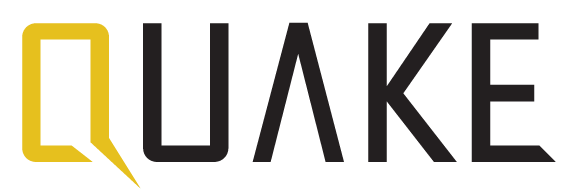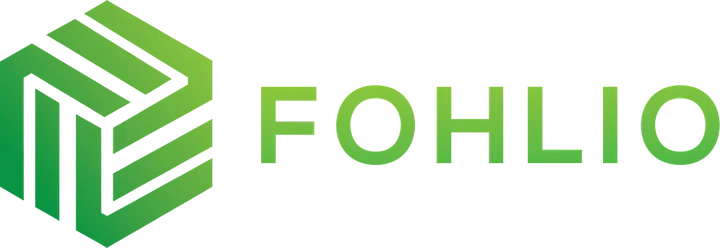I had the opportunity to sit down with a good friend and Partner at K50 Ventures, Adriel Bercow. Ever since I met Adriel, he was always curious about an investment thesis focused on the Future of Work. Fast forward 3 years later, with the acceleration of digital transformation, the Future of Work couldn’t be more prominent. I sat down with Adriel to go over some topics regarding FOW:
How Adriel defines the Future of Work
His categories under the Future of Work
Where investment dollars will flow
Thoughts around the Pre-Seed and Seed Co-Investment Ecosystem
Q: When we met several years ago, there weren’t many people discussing the future of work besides you. I see this is a thesis you’ve always kept in mind. How do you define what the future of work means?
A: Admittedly, it’s a fun space to spend time in due to its encompassing term. Each founder and investor I meet who shares an interest in the future of work has a different perspective of what it means to them. The simple answer for me is the future of work is the understanding of how the global economy will be powered by its workforce over the next 5-20+ years. More specifically, I’ve taken the human-centric approach in examining the relationship between work, technology, and individuals and what it means to earn a living in tomorrow’s digital world.
Q:This question is tied into the 1st, but what categories can you create around the future of work?
A: My strategy for developing investment categories within the future of work has been through identifying what I refer to as “driving factors”. These driving factors are catalysts for change and are shaping today’s global economy and workforce. For example, the $1.6 trillion dollar student debt crisis is a driving factor for how graduates pursue future income generation. If we can make sense of the different trends that are steering change then investment categories begin to become apparent. One of the driving factors I would like to highlight is the empowerment of the consumer worker. As the line between work and leisure bleeds within our daily lives (arguably more so with COVID-19), we have encountered an interesting paradigm shift. As consumers, we have become empowered to define the brands we support and the products we buy. We optimize for the flexibility of experiences over ownership of goods, prioritize convenience, demand corporate social responsibility, and are proactive with our wellbeing. Sound familiar? Trailing behind this consumer shift – but catching up quickly – we are seeing the same empowerment of workers. No longer are they motivated primarily by extrinsic values such as income, prestige, and external validation, but rather intrinsic desires such as autonomy, creative skill application, belonging to a community, and the urge to develop one’s knowledge and abilities.
Through my research of various driving factors I have uncovered and been exploring five investment categories within the future of work: the Gig Economy, the Creator Economy, the Automation Economy, Workforce Development, and the Globalized Workforce.
Q: What are the most interesting categories to you and what changes do you see in those particular areas?
A: Currently, I’m particularly interested in the categories of the Creator Economy and Workforce Development. The Creator Economy (which has also been labeled the Passion Economy and Microentrepreneurship) is the concept that an individual can monetize their skills, interests, and passions through their creations by leveraging various technology platforms and tools. For context, there are nearly 40M Instagram accounts with 500k+ followers and 17M digital content creators in the US making $7B. Across all platforms, we’re talking upwards of a quarter billion creators worldwide with monetizable audiences. Combine that with 86% of 13 to 38 year olds willing to try out influencing, 75% of Gen Z-ers are already earning money through part-time work, and nearly half of them plan on becoming entrepreneurs in order to be self employed. This creates one of the fastest growing sectors of the economy which is drastically underrepresented by the venture community. I expect to see more companies enabling the aspiring creator to enter the Creator Economy through monetization tools, sustainable community development, and ownership of their relationships, data, and communication.
I define the category of Workforce Development as companies focused on the betterment of the everyday worker. This includes opportunities around upskilling, re-skilling, lifelong learning, career placement identification (helping someone find the right career path for them), and employer-sponsored benefits aligned with worker demands. In today’s enterprise, there’s a restructuring of budgets to prioritize employee well-being. A company’s culture is no longer defined by the office environment but rather the happiness of their workforce. What does happiness mean for today’s employee? Similar to their needs as consumers, they seek a balanced lifestyle with personal and professional development, a focus on their health, and a flexible and collaborative work setting.
Outside of the enterprise environment, we’re seeing an accelerated need for solutions to upskill or even re-skill our nation’s workforce. As industries are forced to adopt technology we are seeing unprecedented unemployment with many individuals needing to find different lines of work. Something I think about on a frequent basis is how do we support the labor pool in acquiring the right knowledge, skills, and experience that will allow them to prosper in today’s society.
Q: Where do you think investment dollars will go around FOW?
A: Over the next 24 months we will see a disproportionate amount of investment dollars being directed to companies focused on remote work. While there are certainly some compelling areas for investment in the space, it will ultimately become oversaturated due to venture capitalist groupthink. Companies will be categorized as features rather than defensible, value-creating businesses.
Q: Are there any new business models you see around distributed work forces that weren’t there before?
A: Not so much around distributed workforces. However, one fairly new business model that I’m especially keen on is vertical labor marketplaces. The evolution of LinkedIn, horizontal job boards, and gig marketplaces has led to a verticalized focus on labor pools within different industries. They can provide a better experience for workers through community, resources (i.e. up- and re-skilling, education, etc.), and services (i.e. financing, certifications, etc.) as well as an aggregated and specified talent pool for the demand-side users (i.e. employers). This is particularly important post-COVID as employers will be looking to re-hire qualified talent while workers are looking for the safety net of a service built for their prosperity.
Q: What questions around FOW should I be asking you about ?
A: What does the future look like for blue-collar workers? How do we decrease unemployment post-COVID? How will workers navigate continued automation?
Q: How do you see the pre seed and seed ecosystem taking on FOW?
A: A lot of people attribute the future of work space to productivity, work-flow automation, and tools for remote work. While these can be interesting categories, they are becoming incredibly crowded and buzzy with a lack of product novelty and true understanding of the problems that need to be solved. We will continue to see pre-seed and seed investors investing in these types of companies, however we’ll see a drastic drop-off come the Series A. I believe there are a small handful of investors who truly care about and have a unique understanding about where the future of work is headed. My hope is that the ecosystem continues to develop in order to support the talented, forward-thinking entrepreneurs across the globe who are seeking capital to drive real innovative change for our economy.


